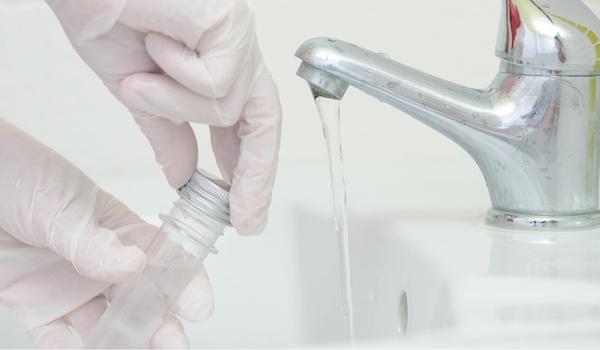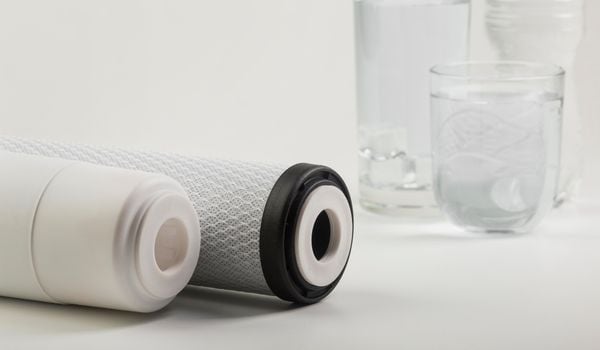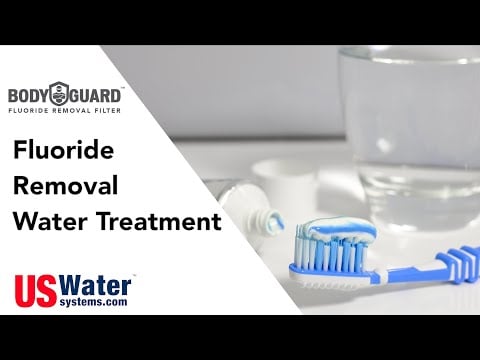Fluoride has long been added to public water for its dental benefits — but not everyone agrees it’s a good thing. If you’re trying to cut back your exposure, you might be wondering: will a water filter actually help?
The truth is, most filters don’t touch fluoride. But a few specialized systems can.
Let’s break down which ones work — and how to find the right fit for your home.
✅ Quick Takeaways
- 🦷 Most basic filters don’t remove fluoride — especially carbon-based ones like Brita or fridge filters.
- 💧 Reverse osmosis and distillers are the most reliable options for full fluoride reduction.
- ⚗️ Activated alumina and bone char filters can also lower fluoride levels, especially in well water.
- 🧪 Testing your water first helps you choose a filter that’s actually strong enough for your needs.
- 🏠 Whole-house fluoride filters exist, but they’re best for homes with high natural levels or extra sensitivity.
🧪 What’s the Deal with Fluoride?

Fluoride is a naturally occurring substance commonly found in – groundwater and well water. In small amounts, it’s long been linked to stronger teeth — which is why it’s added to toothpaste, mouthwash, and in many places… even your tap water.
🥤 So how did it land in your glass?
- 🦷 In the 1940s, researchers noticed fewer cavities in areas with naturally fluoridated water — and started connecting the dots.
- 🏙️ Cities followed suit, adding it to their supplies to boost dental health on a broad scale.
But not everyone’s convinced.
Some researchers have started asking whether we’re getting a little too much of a good thing — especially with all the other ways we now take in fluoride, like dental products, food, and even some teas.
💡 The takeaway? The CDC still supports fluoridation — keep in mind, recent findings suggest it might be a good idea to keep an eye on emerging science.emerging science.
🧠 Why Filter It Out?

Fluoride can help prevent cavities — but more isn’t always better. In areas with naturally high levels, or for people exposed to it through multiple sources, too much fluoride could potentially cause:
| ⚠️ Concern | 💡 What It Means |
|---|---|
| 🦷 Dental Fluorosis | White or brown stains on teeth from too much fluoride during childhood |
| 🧠 Thyroid Disruption | Some studies suggest fluoride may interfere with iodine absorption |
| 🦴 Skeletal Issues | Excessive levels over time may contribute to bone stiffness or joint pain |
| 🧪 Neurological Risks | Early research has linked high exposure to possible cognitive concerns |
💡 Bottom line: The research is still evolving — but if you’re already brushing, rinsing, and drinking fluoridated water daily — it may be worth considering a filter just to keep your total exposure in check.
🚱 Can Filters Remove It?
Not every filter can tackle fluoride — it’s a tricky contaminant that slips past most basic systems. So if your goal is to cut it out, you’ll need a filter that’s built for the job.
Here’s a quick breakdown of what does and doesn’t work:
- ❌ Standard carbon filters? Not enough. Great for chlorine and taste, but they barely touch fluoride.
- ❌ Fridge filters? Same story. They focus on odor and particles, not heavy metals or dissolved solids.
- ✅ Reverse osmosis systems? One of the most effective options — they remove up to 99% of fluoride.
- ✅ Activated alumina? Strong contender, especially for well water. Adsorbs fluoride and arsenic.
- ✅ Bone char filters? More natural, and can remove up to 90% of fluoride depending on flow rate and pH.
- ✅ Water distillers? Slow but thorough. Boils water, collects steam, and leaves fluoride behind.
💡 Pro Tip: If you’re relying on a pitcher or faucet filter, make sure it’s lab-certified for fluoride removal — most aren’t. Brands like Epic Pure and Seychelle are better bets.
🧰 Filter Types That Work

Not all filters are up to the task — and many popular models don’t touch fluoride at all. If you’re trying to cut it out of your tap water, you’ll need a system built specifically for the job.
Let’s look at a few common filter types that go beyond the basics 👇
| 🔍 Filter Type | 💡 How It Works | ✅ Fluoride Reduction |
|---|---|---|
| 🔄 Reverse Osmosis | Uses pressure to push water through a semi-permeable membrane, trapping fluoride and other contaminants | Removes up to 99% — great for under-sink use See RO system guide |
| ⚪ Activated Alumina | Adsorbs fluoride onto aluminum oxide media — also effective for arsenic | Removes up to 95% — works well in whole-house systems |
| 🦴 Bone Char | Made from charred animal bones; bonds with fluoride and heavy metals | Removes up to 90% — performance varies by pH and flow rate |
| 💨 Water Distillation | Boils water, collects steam, and leaves fluoride behind | Removes 99% — slow but thorough How distillation removes fluoride |
💡 Why It Matters: Not all filters are created equal — and most off-the-shelf options won’t touch fluoride. That’s why it’s important to match your filter type to your fluoride levels, especially if you’re using well water or want to avoid bottled altogether.
🧫 How to Test Your Water

Before you spend money on a filter, it helps to know exactly how much fluoride you’re dealing with — especially since not every system handles high levels well.
Here’s how to get the answers you need:
| 🔍 Method | 💡 What It Tells You |
|---|---|
| 📄 Consumer Report (City Water) | Lists fluoride levels and other treated contaminants — request it from your local utility |
| 🧪 DIY Test Kit | Fast and affordable, but results may be rough estimates — better for spot checks |
| 📬 Lab-Grade Mail-In Kit | Highly accurate results with tailored filter advice — we recommend Tap Score for easy, at-home testing |
💡 Pro Tip: If you’re using a private well, it’s smart to test at least once a year — especially since fluoride can show up naturally and often goes unnoticed.
🧃 Picking the Right Filter

Not every water filter is built to tackle fluoride — and those that do vary in how much water they can handle. The trick? Matching your water demand with the system’s output so you’re not left waiting on a trickle.
Here’s how different options stack up:
| 🧊 Filter Type | 💡 Fluoride Reduction | ✅ Best For |
|---|---|---|
| 🔬 Reverse Osmosis | Removes up to 99% of fluoride and other contaminants | Families who need daily filtered water for drinking & cooking |
| 💠 Activated Alumina | Reduces up to 95% of fluoride | Well owners looking for a high-capacity option or whole-home compatibility |
| 🦴 Bone Char | Removes around 90% of fluoride | Eco-conscious households with moderate fluoride levels |
| 💧 Water Distillers | Near-total fluoride removal | Individuals or small households — very slow but thorough |
| 🥤 Fluoride-Targeting Pitchers | Removes up to 98% (brand-dependent) | Single users or low-demand setups — see our thoughts on filter pitchers here |
💡 Heads-up: Whole-home reverse osmosis systems exist, but they’re rare — and pricey. For most people, a single point-of-use filter (like an under-sink unit) gets the job done without slowing your entire plumbing system down.
✅ Final Thoughts
Fluoride in tap water is a complex topic. While it may help prevent cavities, mounting research suggests there could be downsides — especially with long-term exposure.
But here’s the good news: you don’t need to switch to bottled water or guess what you’re drinking.
💡 A simple test can tell you exactly how much fluoride (and other stuff) is in your water — and from there, the right filter makes a real difference.
Whether it’s a fluoride-reducing pitcher, a point-of-use system under your sink, or a whole-house setup using bone char or activated alumina, safe and clean water is within reach — without the stress.
 109 people found this helpful. Was this guide helpful to you?
109 people found this helpful. Was this guide helpful to you? 


